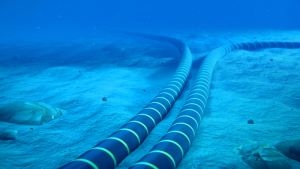The escalating demand for artificial intelligence is driving significant investments in undersea cables, vital for global data transmission. Meta’s Project Waterworth, a 31,000-mile subsea network, exemplifies efforts to enhance global AI capabilities.
Announced in February, Project Watermouth is the “most ambitious subsea cable endeavor yet,” designed to reach five major continents and span over 31,068 miles (longer than the Earth’s circumference), making it the world’s longest subsea cable project using the highest-capacity technology available.
However, challenges such as geopolitical tensions and regulatory hurdles persist in the deployment of these critical infrastructures. An average of about 200 cable faults occur every year causing damage to undersea communications every year, according to the International Cable Protection Committee. But a recent spate of incidents in the Baltics and Taiwan where undersea cables connecting U.S. allies were damaged may have been instigated by Russia or China, according to NBCNews.
This week, NATO member Finland began using aerial drones to monitor the Baltic Sea, to prevent undersea cables from being damaged, according to NHK News. The drone is deployed once suspicious activities are detected and sends back real time video. Previously, NATO been used ships and aircraft to monitor the Baltic Sea.
Last week, China flaunted its deep-sea, cable-cutting device, capable of “severing the world’s most fortified” underwater communications lines, according to the South China Morning Post. The tool can cut lines at depths of up to 13,123 feet and can be used by China’s advanced crewed and uncrewed submersibles.
“The revelation marks the first time any country has officially disclosed that it has such an asset, capable of disrupting critical undersea networks,” the South China Morning Post reports.



